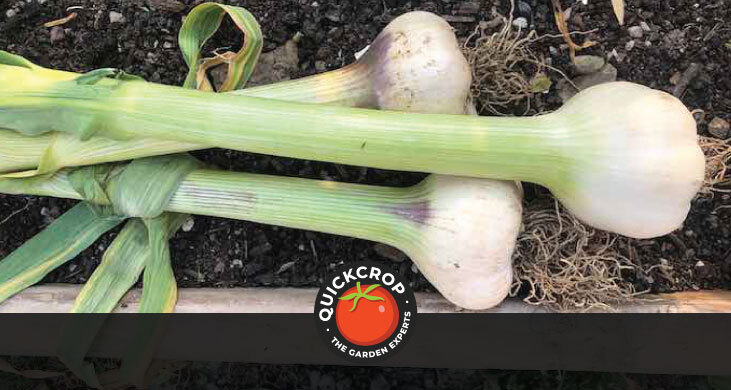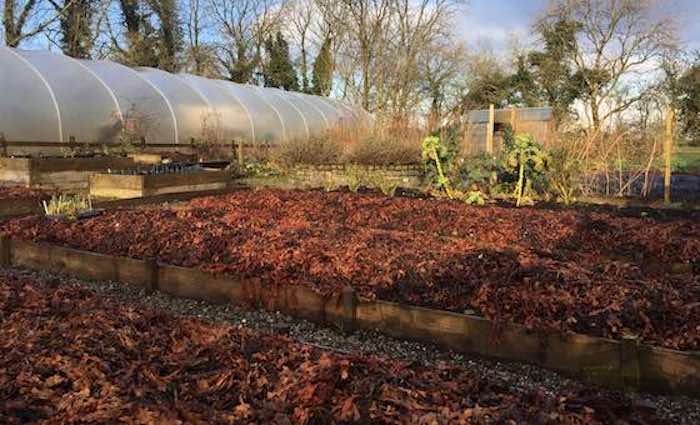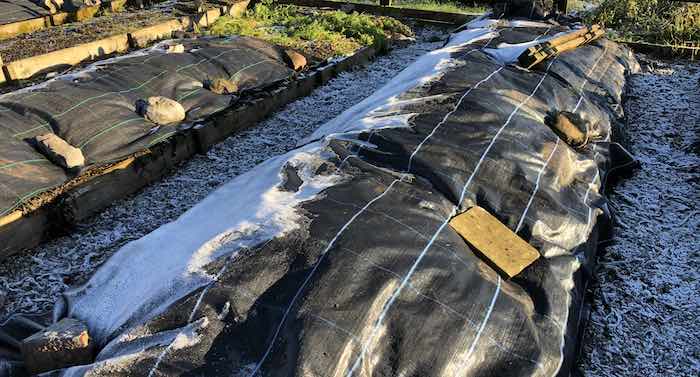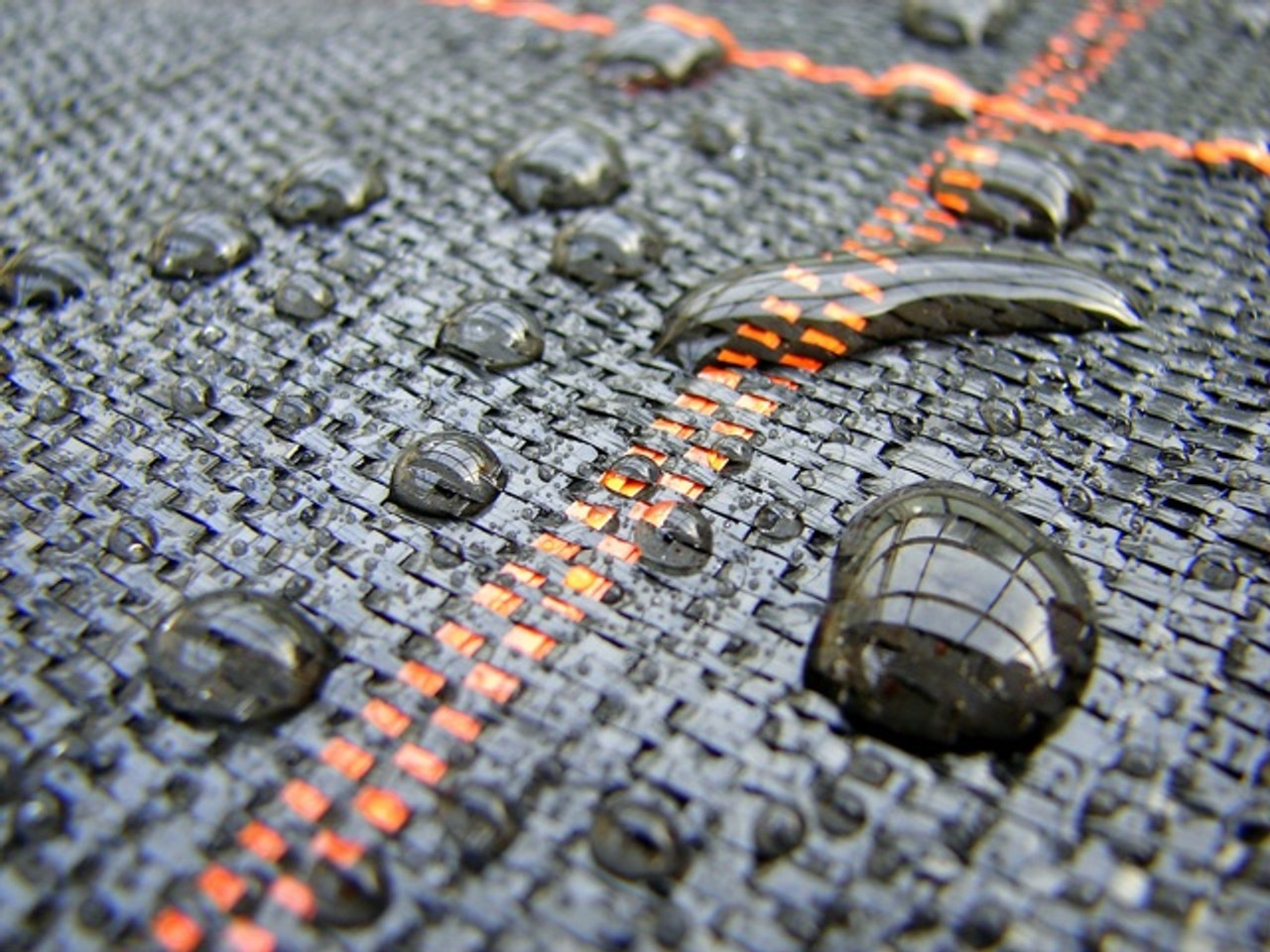The Vegetable Garden in October

I know I mentioned feeding your soil in some detail at the end of August, but it really is the best thing you can do for your garden at this time of year. Layers of organic matter - which may include garden compost, manure, leaf mould and grass clippings or seaweed - provide both food and protection to all the living things in your soil.

Farm Yard Manure - 750 litre Bulk Bag
View ProductIt is, of course, the living things in the soil (including bacteria, amoeba, centipedes, grubs and earthworms) that process organic matter and turn it into plant food; so when we talk about feeding soil, it is this lot that we are feeding. No pressure, but think of it as having hundreds of millions of tiny pets you need to look after.

It is best to cover beds with organic matter while there is still a little bit of warmth left in the season so that the earthworms and their friends are still active and able to start breaking it down. In cold weather earthworms burrow deeper into the soil to retain heat, and either hibernate or move very slowly - so little processing work is done over the winter.

I also cover my beds in mypex weed control membrane to help prevent nutrients being washed out by heavy rain, and (I believe) to provide some warmth on sunny days to speed up the breakdown of the material underneath.
In the above image you can see my covered beds last winter showing frost on one side while the other is warmed by the winter sun. When I put my hand under the mypex, the seaweed and manure underneath was warm to the touch while any uncovered soil remained cold.

Mypex Weed Control Fabric 1.5m wide
View ProductIt is often claimed (by me amongst others) that black plastic sheeting warms the soil in spring prior to sowing and planting, so I was very interested to see the following experiment done by a contributor to the Kitchen Garden magazine online forum (the contributor goes by the name 'plumpudding' for some reason):
The experiment was to measure the average temperature under a range of coverings over a 9 day period of cold winter weather. The conditions experienced over the 9 day test were sunshine, one day of frost and snow, five frosty nights, cool cloudy and rain, very cold winds and intermittent sun and showers.

Surprisingly (to me) the average soil temperature over the nine days tested was as follows:
- Uncovered ground 9.5˚C
- Black plastic 9˚C
- Clear plastic 10.5˚C
- Fleece cloche 10˚C (Air temperature 10.5˚C)

Easy Fleece Tunnels - Garden Cloches
View ProductI definitely wasn't expecting that. I will be taking my own readings over the winter but if 'plumpudding' is correct it would appear that black plastic actually warms slower than uncovered soil. My reasons for using mypex are more for protection rather than heat so it is going on again this winter, but I just thought it was an interesting experiment.
By the way, I am often asked if Mypex leaches chemicals into the soil and while I have never tested a soil sample I can tell you it is UV stabilised (it doesn't break down or degrade in direct sunlight) so I don't think it poses any risk. I accept that plastic sheeting may not be the most eco-friendly material, but I do re-use the sheets every year; and I feel the benefits of protecting the soil and preventing nutrients being washed out outweighs the downsides of the sheeting over time.

Planting Garlic and Overwintering Onions
There is very little you can sow in October, except perhaps some Asian greens if you are growing in a greenhouse or polytunnel. The exceptions are garlic or overwintering onions which are both planted now: preferably before the end of the month, but they can also be put in over winter.
Don't forget that your garlic or onions will need a well fed soil to realise a good crop. As always, well-rotted compost is the best slow-release solution in Autumn: the nutrients it contains are relatively insoluble, so won't wash out over winter.

Westland Fish, Blood & Bone Meal
View ProductIf I get my garlic planted early in October I use a little bit of blood fish and bone to help with root development, but I feel this is probably wasted once we get into November - as from then there will be very little growth until the spring.

A good trick - if you are late planting garlic or onions and have a covered growing space - is to plant in trays of compost, because the garlic roots and stems will be twice the size in springtime as they would be if planted outside. I use 6 cell trays as you see above, which gives enough room for decent rooting.
Up until this year I would have advised to move the trays out in January so that the bulbs are exposed to the required temperatures below 10 degrees (garlic needs to experience temperatures below 10˚C for the clove to form a bulb of multiple cloves), but after experimenting this season I'm not sure this is necessary. Temperatures in my tunnel are below 10˚for the most part, and the garlic that I planted directly in the tunnel last October gave me the best bulbs I had ever grown.

Planting Perennials in Autumn
Growing in pots undercover is also a good idea for perennial flowering plants - if you want more impressive plants to put in the ground next spring, that is. If you are buying perennials online, most nurseries supply them in relatively small 9cm pots because larger pots are expensive to ship (which would push the price of the plants up too high).
While 9cm pots produce perfectly good plants, they can look small when they are planted out and might take longer to fill out than you were expecting. 'Potting on' is your friend here and can result in significantly larger plants.

Winter Composting
Due to the fact that they are big harvesting months, there will be plenty of garden waste to add to the compost heap in September and October. Unfortunately, as it gets colder, the composting process will be very slow - and will grind to a complete halt if the compost is allowed to get wet.
If you have an open compost heap it is a good idea to add an insulating layer on top (like straw, dried leaves or cardboard) and to cover with something to keep the rain off, as a wet heap is a lot colder than a dry one.

Golden Gark Multipurpose Garden Tool
View ProductFor more info on speeding up the composting process, or at least preventing it from slowing to a crawl, see this article.

Poetry is for the birds
I don't remember in what context my father informed me that 'poetry is for the birds'. Given his opinion, I can't see why we would have been talking about it in the first place but, for some reason, it stuck in my mind.
I won't pretend to know much about the artform either (I only have 5 or 6 poetry books, all of which were either given to me or came into my possession by chance). I expect I miss the intention of the author most of the time as I am often astounded to learn the 'true meaning' behind poems, novels or films which have gone completely over my head. What I can appreciate is the rhythm of the work and the obvious skill of choosing and weighing the perfect word before fitting it neatly into its predestined place.

The reason I ended up with 'The River' by Jane Clarke is that my daughter was singing at an event where Jane was reading some of her work. I absolutely loved it and bought the book, which Jane kindly signed while I mumbled some incoherent appreciation.
I had featured one of the poems from 'The River' in this newsletter (with Jane's kind permission) so there had been some contact since. Nonetheless, I was suprised (and delighted) to receive a postcard last week with the following poem on the front and the words 'Hi Andrew, thought you might enjoy this one' written on the back.
Not wanting to miss an opportunity to show off that I fraternise with poets and artistes, I include 'Eggs' below. This new poem was commissioned by Festival in a Van for the Words Move Tour 2021.
Eggs
I'd have followed her anywhere but my grandmother rarely went farther than the yard, tending her hens.
Every morning she poured fresh water and ladled corn into the dented tin dish, adding handfuls of seed and grit.
From a gap in the galvanised roof sun lit up the lines on her face. She let me reach into nest boxes
to grasp warm eggs, then slip them into her cardigan pockets. She chased the cantankerous cockerel away
and warned, Watch out for men who fancy themselves. At the kitchen table we divvied up the eggs, rolled
the surplus in melted lard and salt and stowed them in the scullery, like pullets roosting on a high shelf.

'The River' and 'When the Tree Falls'
If you would like to read more of Jane Clarke's work, she has two published collections 'The River' and 'When the Tree Falls'. I must have bought 'The River' five times now as I keep giving my copy away but have ordered them both just now. I know we are a long way from Christmas but might I suggest one or both as a present for someone special?
Rather than me trying to explain the collections (which I wouldn't understand anyway), you can read more about them and see Jane reading some of her work by visiting her website, Jane Clarke Poetry here.
OK, that's it from me, see you next week. Andrew
